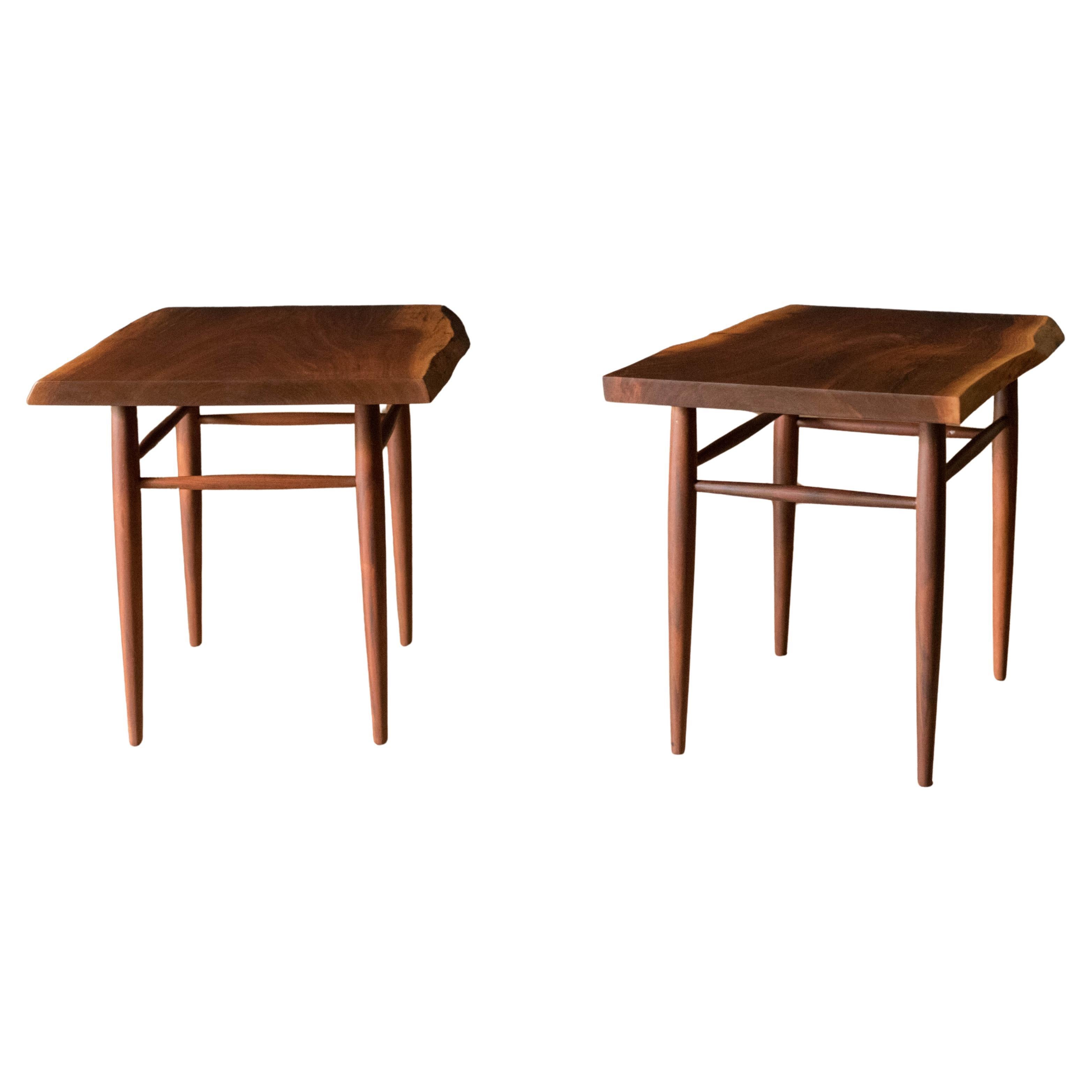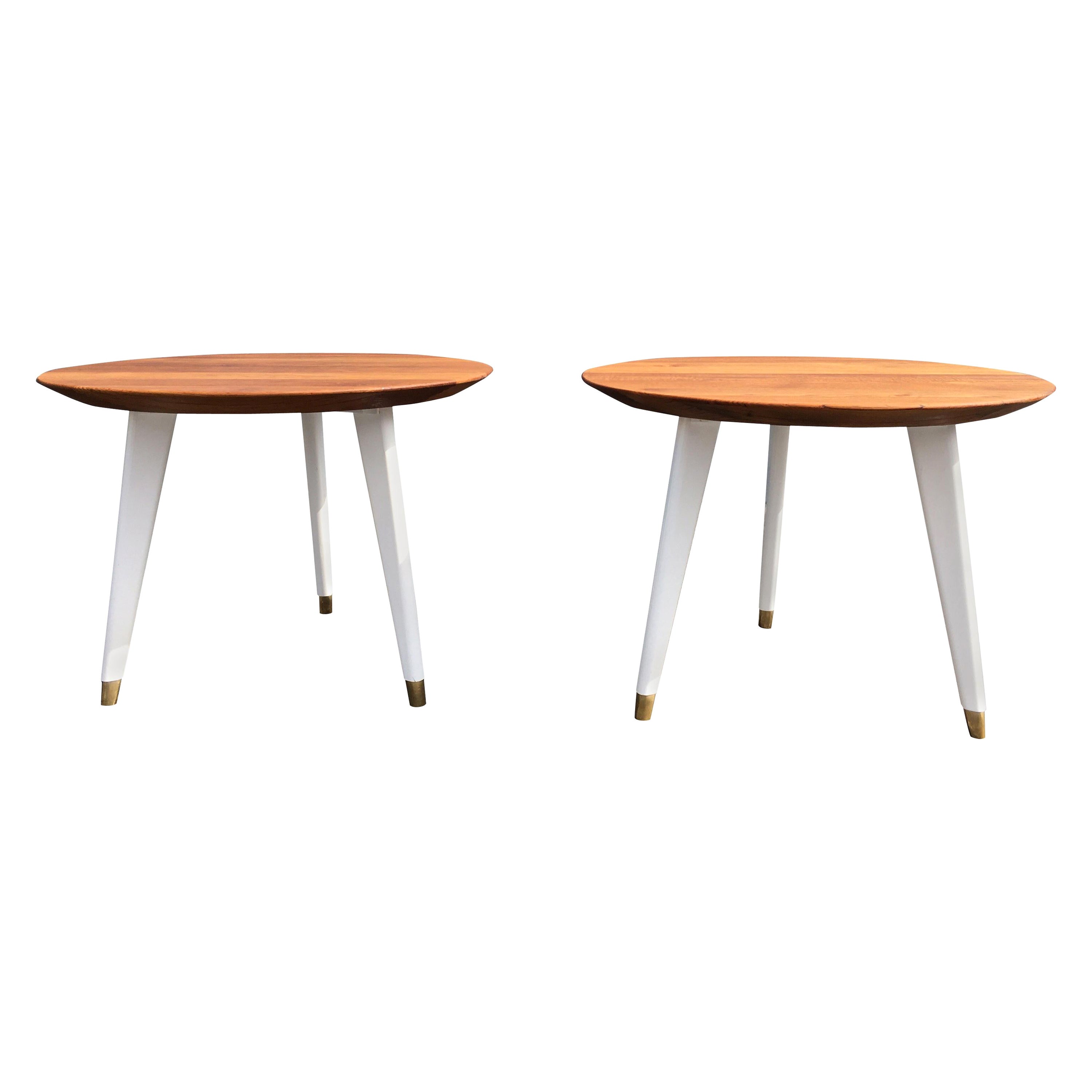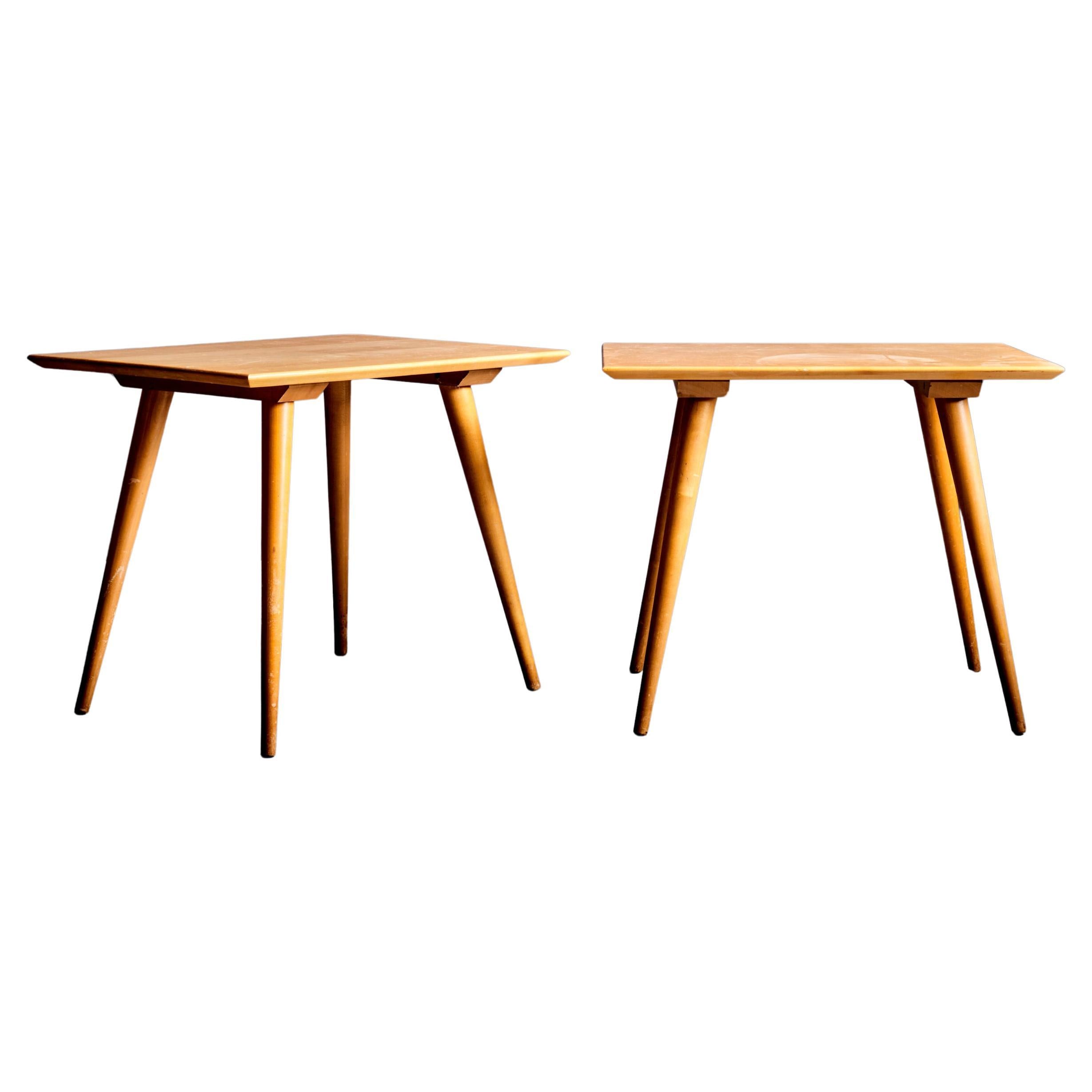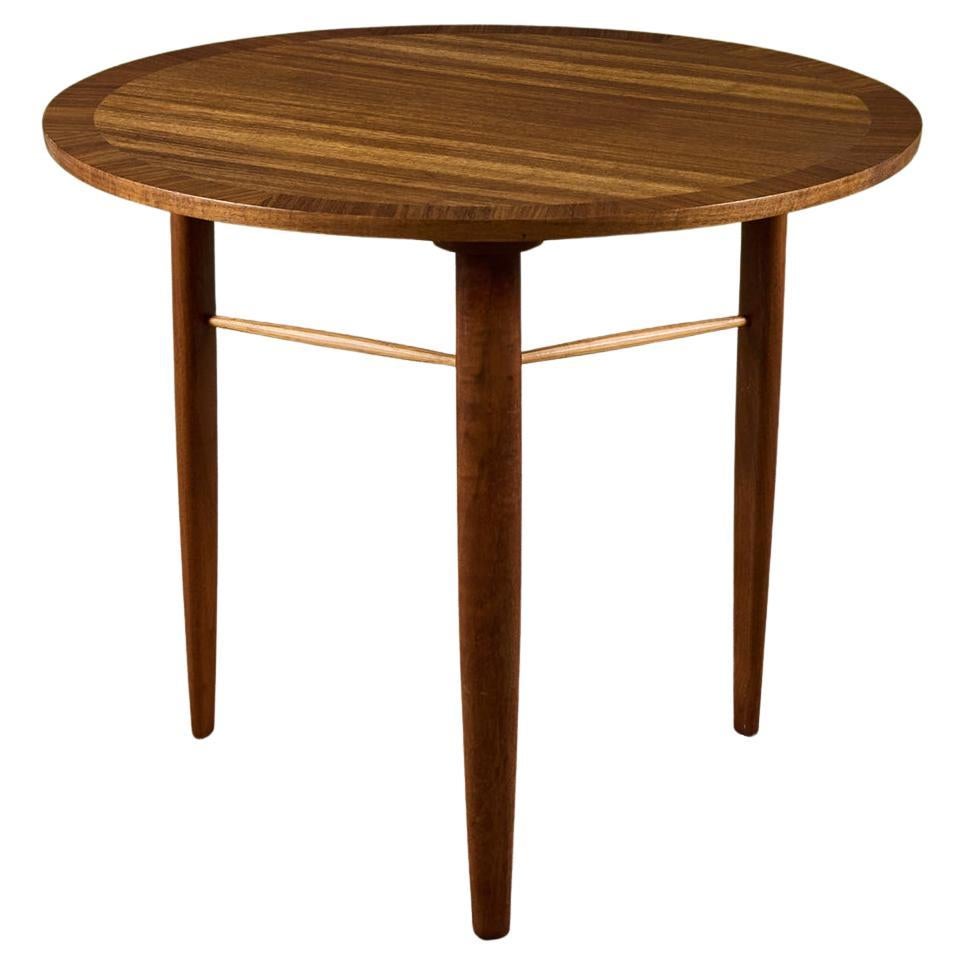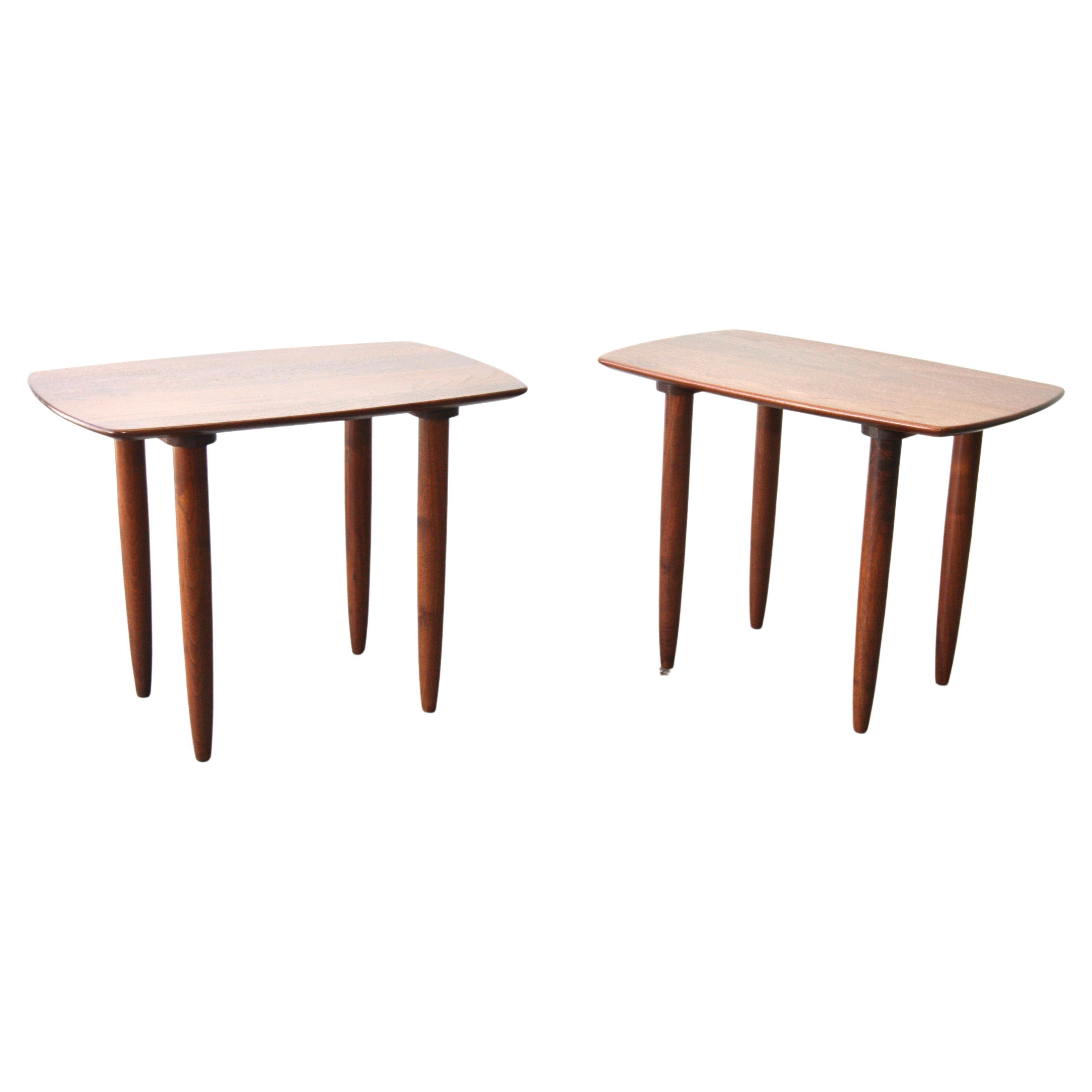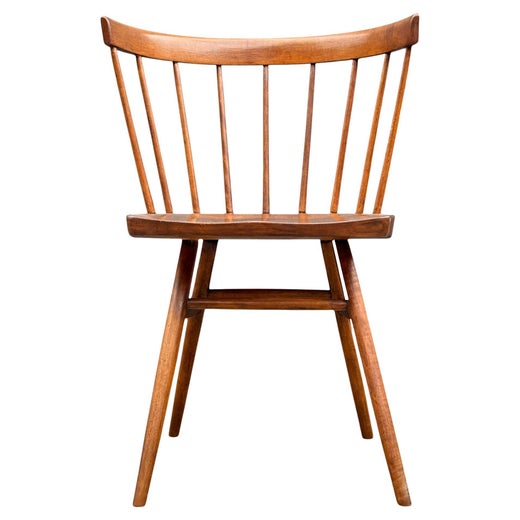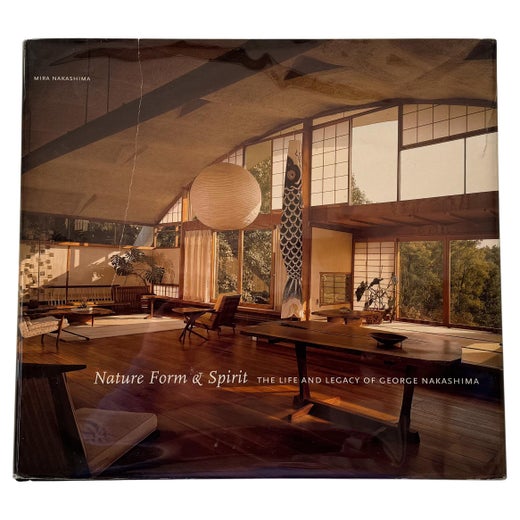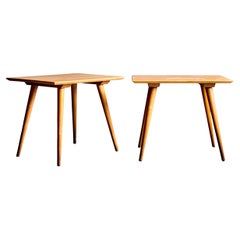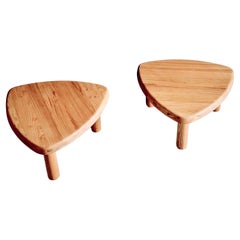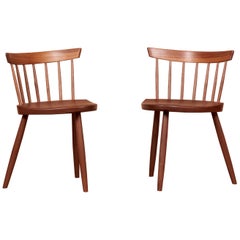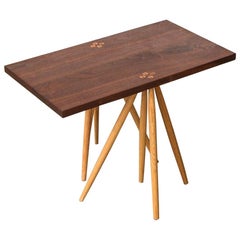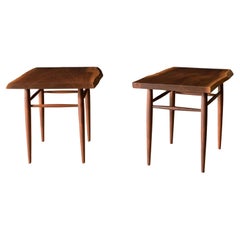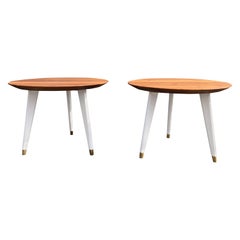Pair of Mira Nakashima Wepman Side Tables based on a design by George Nakashima
About the Item
- Creator:George Nakashima (Designer),Mira Nakashima (Manufacturer)
- Dimensions:Height: 17 in (43.18 cm)Width: 18 in (45.72 cm)Depth: 23 in (58.42 cm)
- Sold As:Set of 2
- Style:Mid-Century Modern (In the Style Of)
- Materials and Techniques:
- Place of Origin:
- Period:
- Date of Manufacture:2023
- Production Type:New & Custom(Current Production)
- Estimated Production Time:23-24 weeks
- Condition:
- Seller Location:Berlin, DE
- Reference Number:Seller: on order 1stDibs: LU1591227796172
George Nakashima
A master woodworker and M.I.T.-trained architect, George Nakashima was the leading light of the American Studio furniture movement. Along with Wharton Esherick, Sam Maloof and Wendell Castle, Nakashima was an artisan who disdained industrial methods and materials in favor of a personal, craft-based approach to the design of chairs, coffee tables and other pieces. What sets Nakashima apart is the poetic style of his work, his reverence for wood and the belief that his furniture could evince — as he put it in the title of his 1981 memoir — The Soul of a Tree.
Born in Spokane, Washington, to Japanese immigrants, Nakashima traveled widely after college, working and studying in Paris, Japan and India, and at every stop he absorbed both modernist and traditional design influences.
The turning point in Nakashima’s career development came in the United States in 1942, when he was placed in an internment camp for Asian-Americans in Idaho. There, Nakashima met a master woodcarver who tutored him in Japanese crafting techniques. A former employer won Nakashima’s release and brought him to bucolic New Hope, Pennsylvania, where Nakashima set up a studio and worked for the rest of his life. (Master craftsperson Mira Nakashima keeps her father’s legacy alive at the George Nakashima Studio in New Hope today. She has been the artistic director of George Nakashima Woodworkers since her father's death, in 1990.)
Nakashima’s singular aesthetic is best captured in his custom-made tables and benches — pieces that show off the grain, burls and whorls in a plank of wood. He left the “free edge,” or natural contour, of the slab un-planed, and reinforced fissures in the wood with “butterfly” joints.
Almost all Nakashima seating pieces have smooth, milled edges. Nakashima also contracted with large-scale manufacturers to produce carefully supervised editions of his designs. Knoll has offered his Straight chair — a modern take on the spindle-backed Windsor chair — since 1946; the now-defunct firm Widdicomb-Mueller, the result of a merger between Widdicomb and Mueller Furniture, issued the Shaker-inspired Origins collection in the 1950s.
Nelson Rockefeller in 1973 gave Nakashima his single largest commission: a 200-piece suite for his suburban New York estate. Today, Nakashima furniture is collected by both the staid and the fashionable: his work sits in the collections of the Philadelphia Museum of Art, New York’s Metropolitan Museum of Art and the Smithsonian Institution, as well as in the homes of Steven Spielberg, Brad Pitt, Diane von Furstenberg and the late Steve Jobs.
Find vintage George Nakashima furniture for sale on 1stDibs.
Mira Nakashima
For nearly two decades, Mira Nakashima worked in the shadow of her legendary father, master woodworker George Nakashima. She never intended to follow in his footsteps, but she was persuaded to join him in his woodworking business after earning a graduate degree in architecture from Tokyo’s Waseda University.
“My father was an architect who went to Harvard, didn’t like it and switched to MIT,” Nakashima explains.
“I went to Harvard and loved it. He encouraged me to study architecture, so I did. I would rather have studied music. I was in a dance group and a choral group. After college, my godmother took me on a tour of Zen monasteries in Japan. I went to live there with an aunt to master Japanese, flower arranging and the tea ceremony. Then I went to Waseda University, learning architecture by the atelier system, where you actually build things. I married a fellow student and we began having children. After we moved to Pittsburgh and had more babies, my father asked me if I wanted to come ‘home,’ promising to build us a house near him. My husband liked the idea, so we went. I began to do part-time work for my father. It was just a job. Then my husband and I parted, so I went to work with Dad. It was never planned.”
That part-time position turned into a full-time job, and when George Nakashima died, in 1990, Mira was faced with a choice: continue the family legacy or shutter the business. As news of her father’s death spread, clients started canceling orders, fearing that the studio’s innovation would wane without him at the helm.
Skeptics proved wrong. Mira Nakashima continued to execute her father’s iconic designs — such as his Conoid chair — while also creating new ones of her own that take advantage of and highlight the unique characteristics and allure of her, and her father’s, favored material.
“Keisho means ‘continuation’ in Japanese,” she says. “I am just as interested in traditional lines, classic proportions and fine wood specimens, but I work out my designs differently. The boards tell you what they want to reveal.”
Shop authentic Mira Nakashima tables, case pieces and more on 1stDibs.
- ShippingRetrieving quote...Shipping from: Berlin, Germany
- Return Policy
More From This Seller
View AllVintage 1950s American Mid-Century Modern End Tables
Maple
2010s French Mid-Century Modern Side Tables
Elm
21st Century and Contemporary American Mid-Century Modern Chairs
Wood, Walnut
2010s American Mid-Century Modern Side Tables
Oak, Walnut
Vintage 1960s Guatemalan American Craftsman End Tables
Wood
21st Century and Contemporary American Mid-Century Modern Coffee and Coc...
Walnut
You May Also Like
Vintage 1970s American Mid-Century Modern End Tables
Walnut
Vintage 1950s American American Craftsman Side Tables
Walnut
Vintage 1980s Italian Mid-Century Modern Side Tables
Brass
Mid-20th Century American Mid-Century Modern Side Tables
Walnut
Vintage 1960s American Mid-Century Modern Side Tables
Walnut
Mid-20th Century American Mid-Century Modern Side Tables
Glass, Walnut
Read More
A New Exhibition Spotlights the Nuance of 1940s Art and Design
Works by a range of designers and artists prove that the constraints of the time didn't stifle creativity.
Original in Berlin’s Lars Triesch Has Turned a Passion for Design into a Booming Business
His two gallery spaces in the German capital bring together thousands of pieces ranging from mid-century classics and Murano glass to covetable reproductions manufactured in-house.
